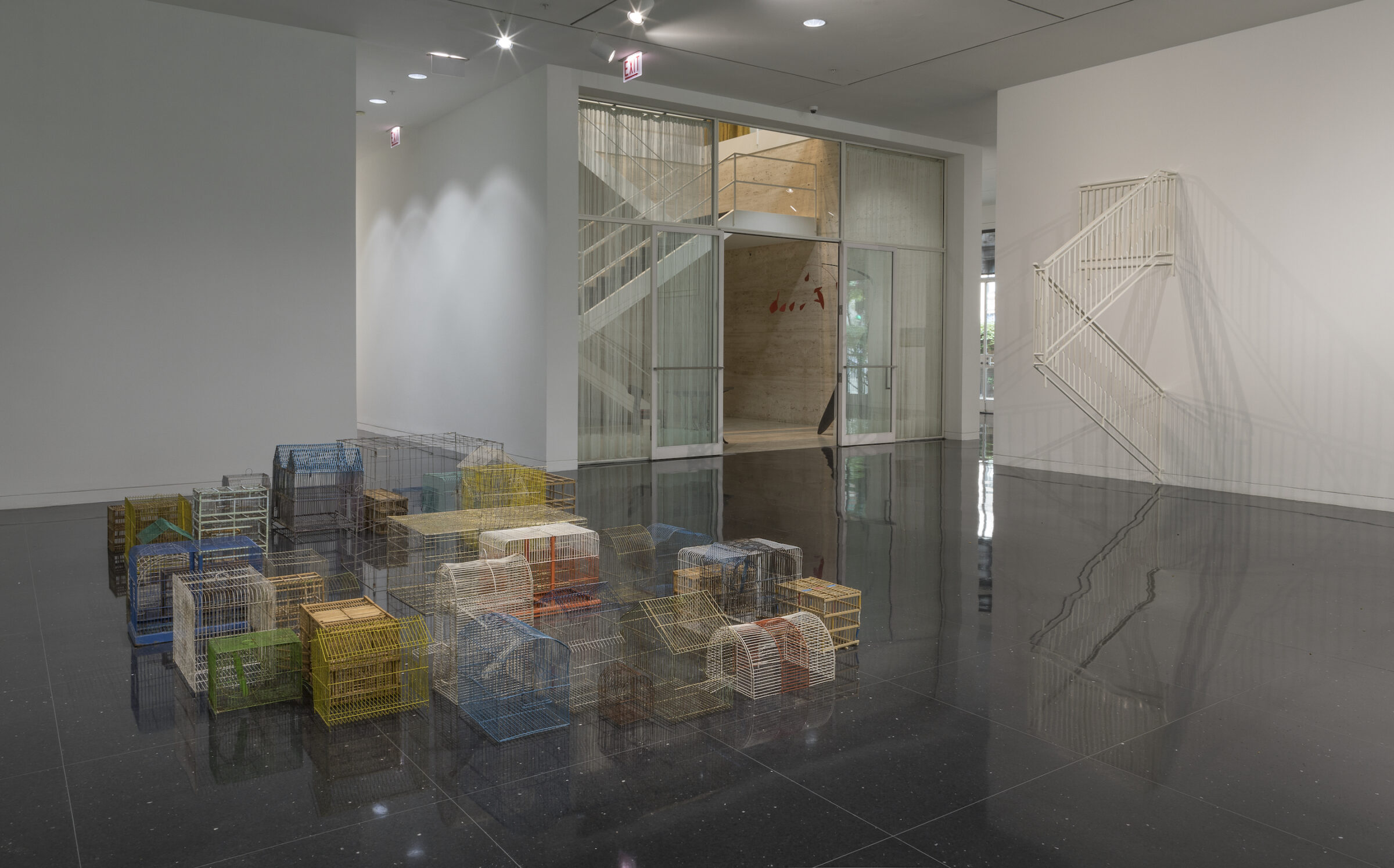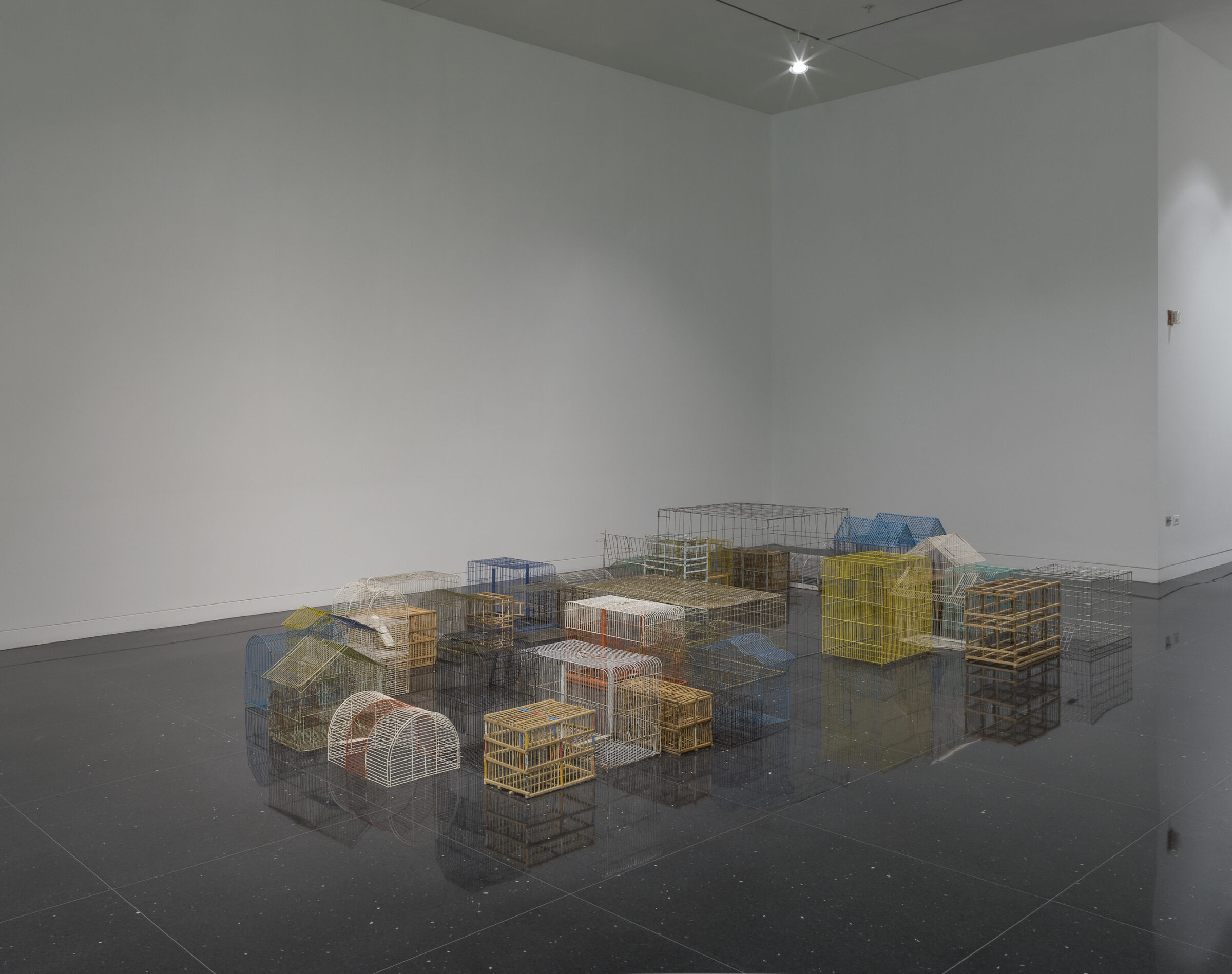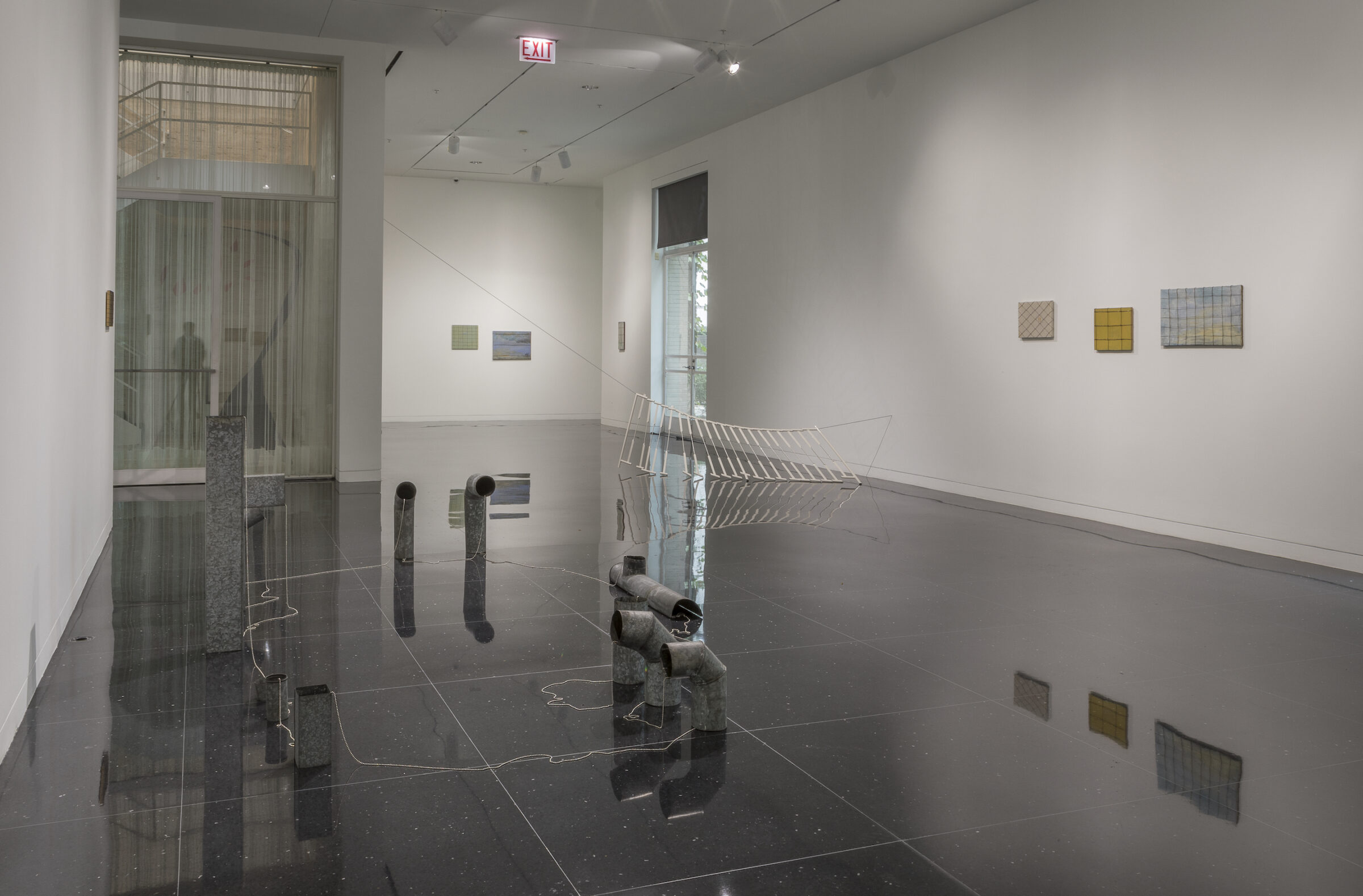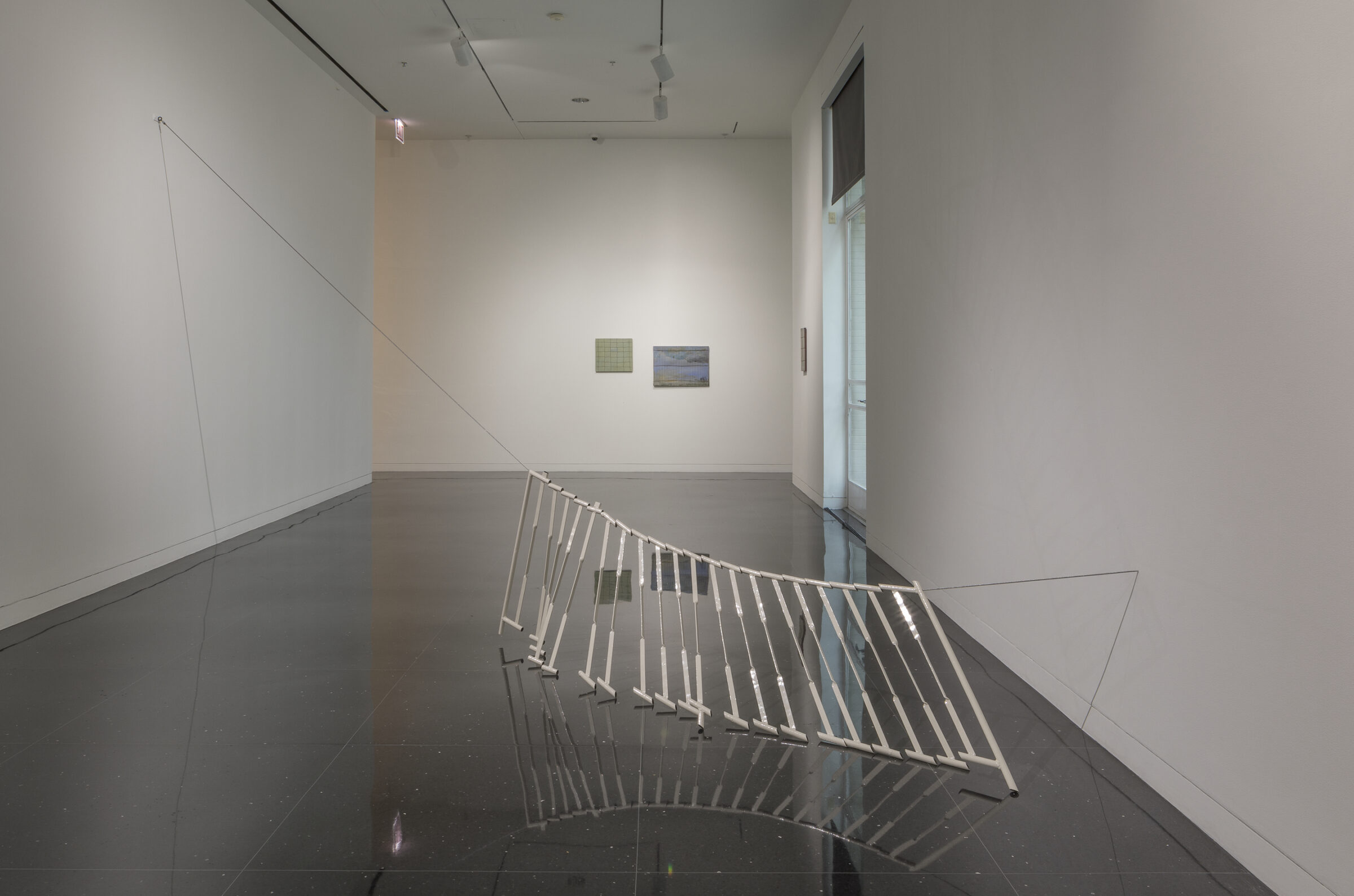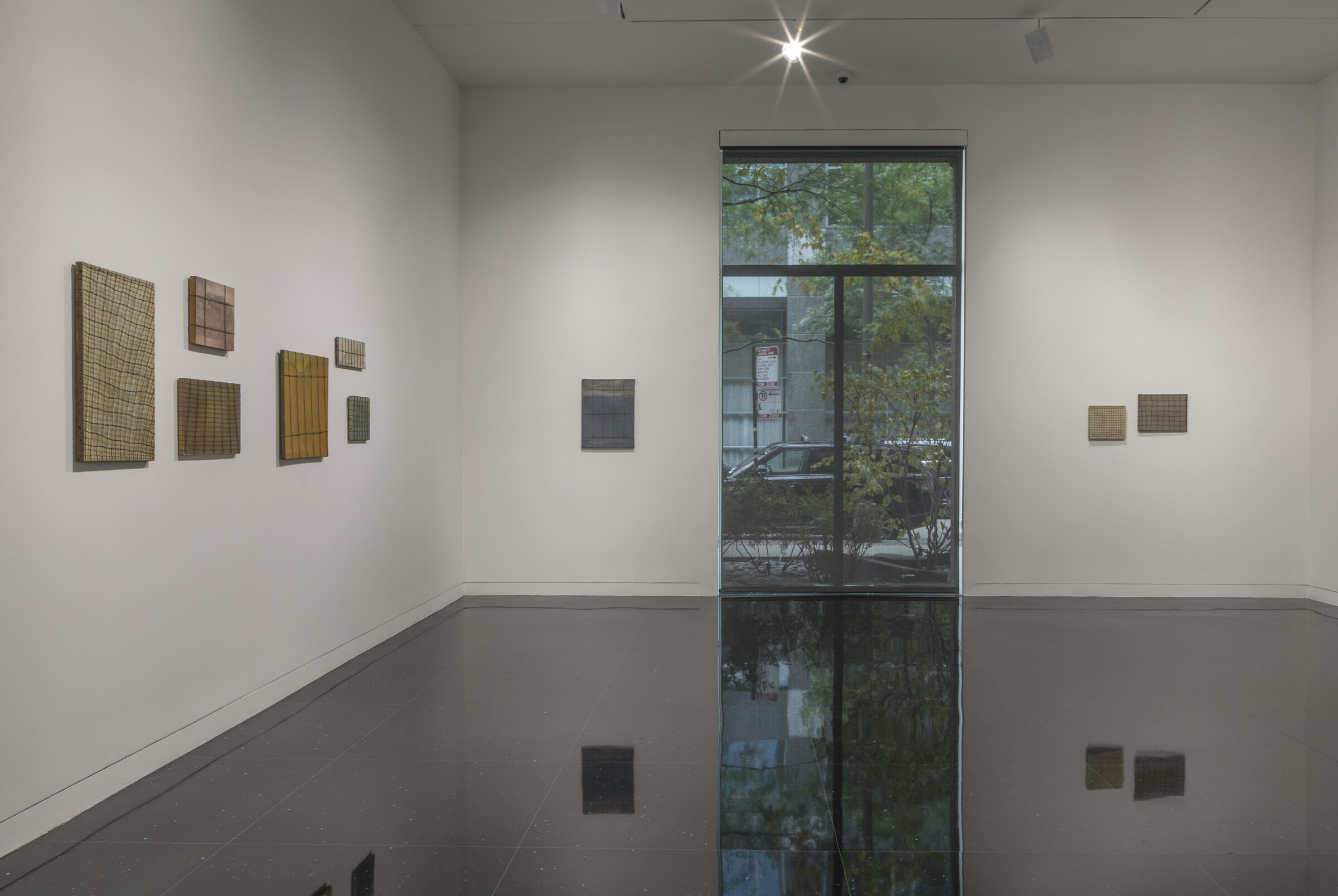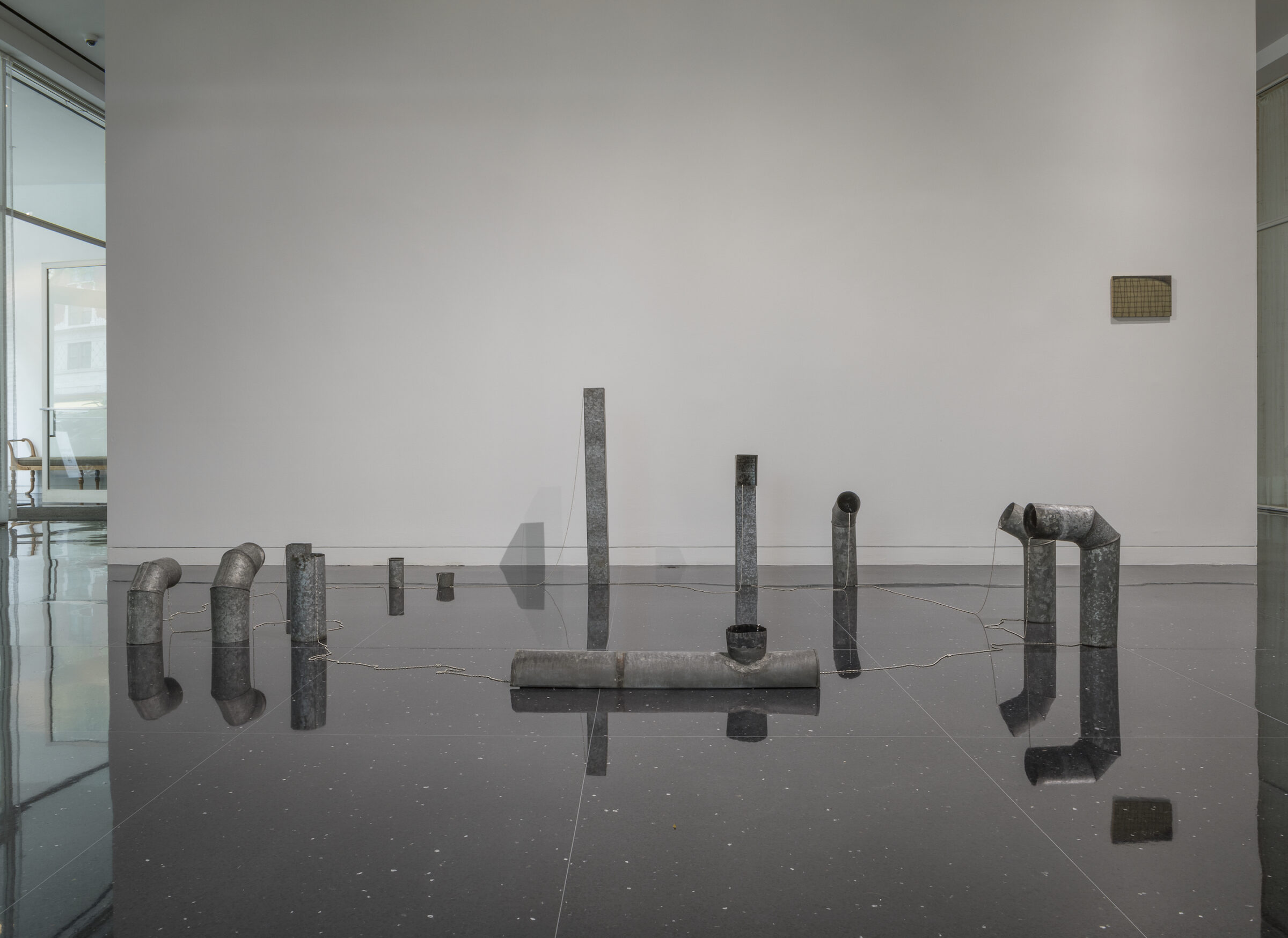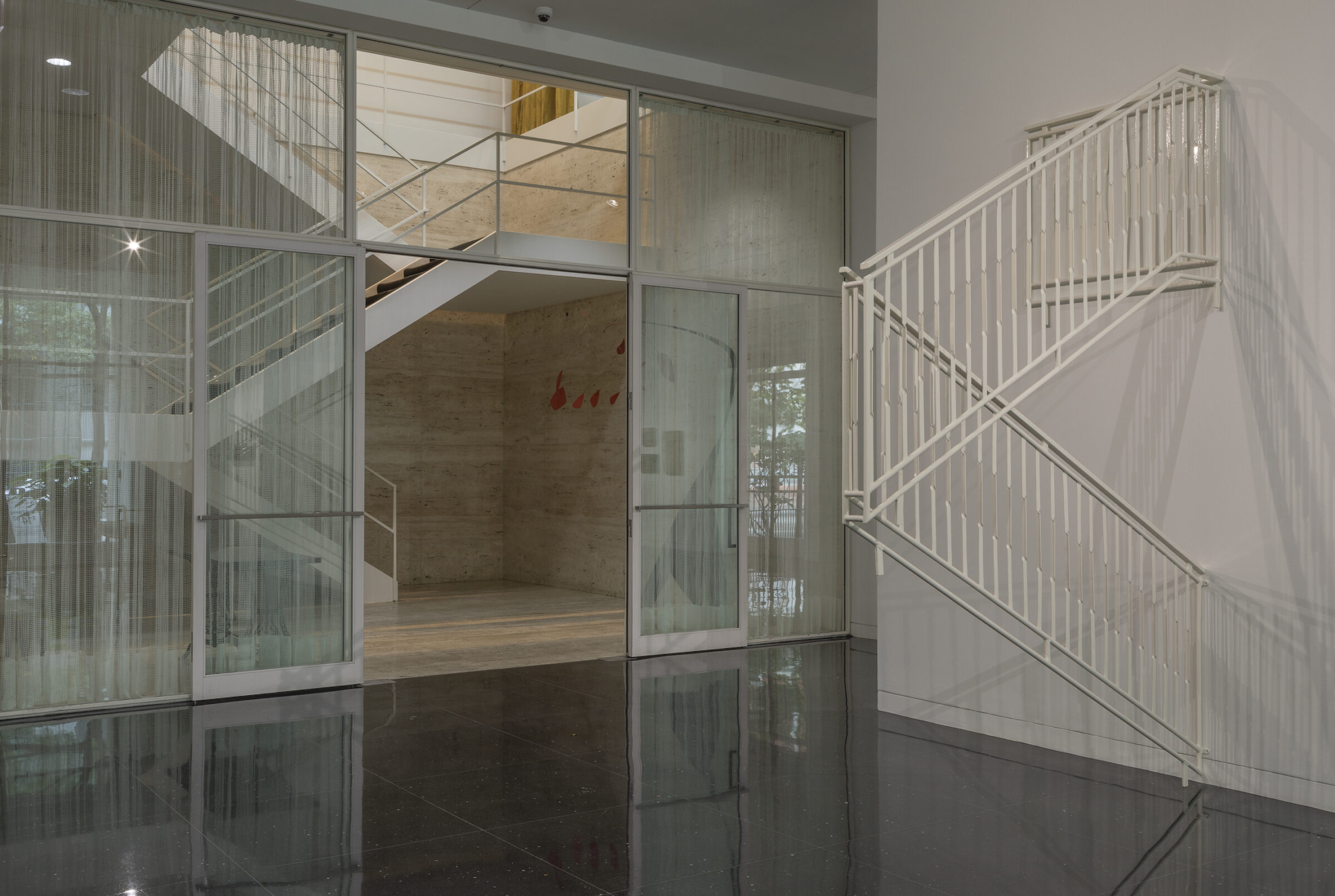Roman OndakMan Walking toward a Fata Morgana
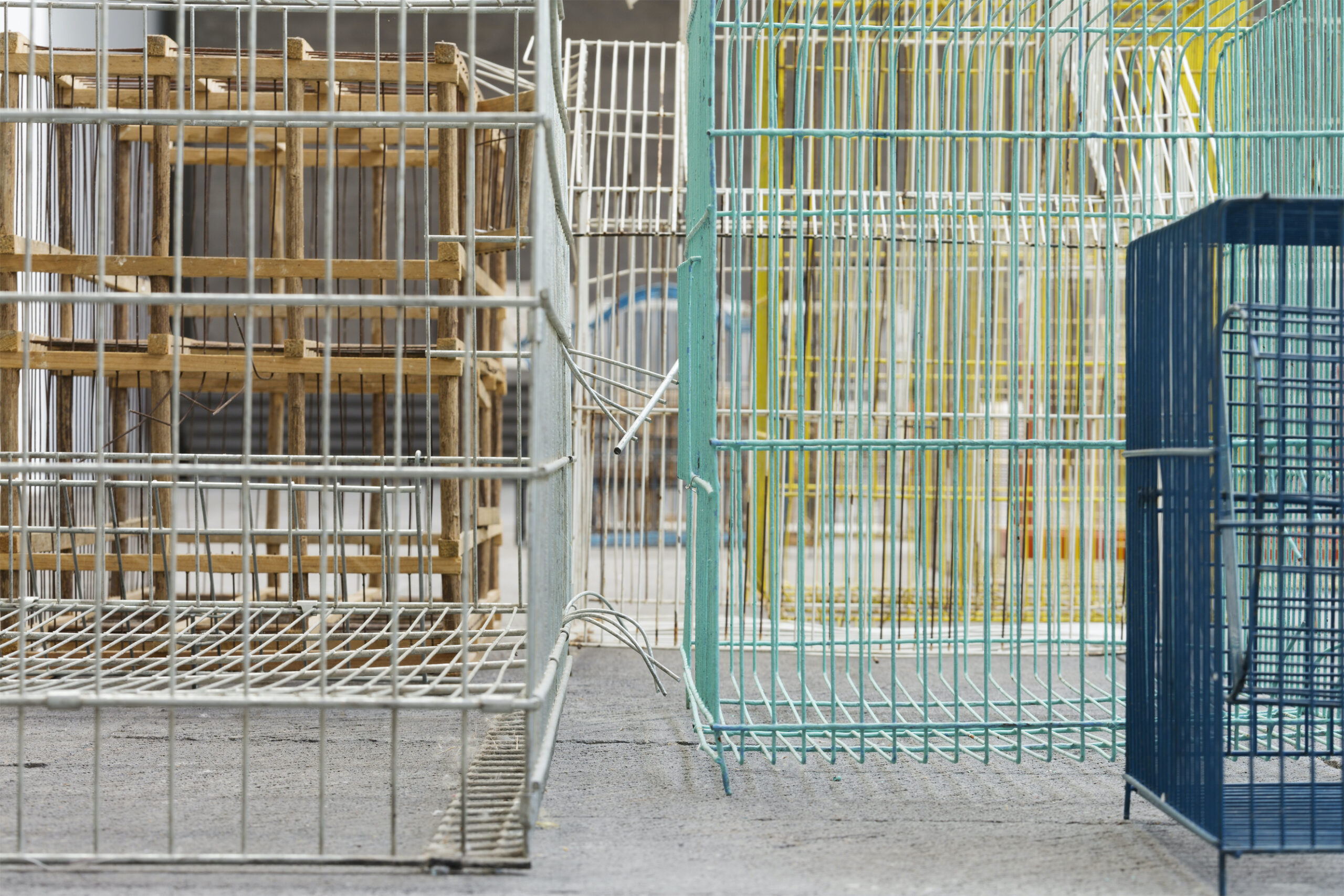
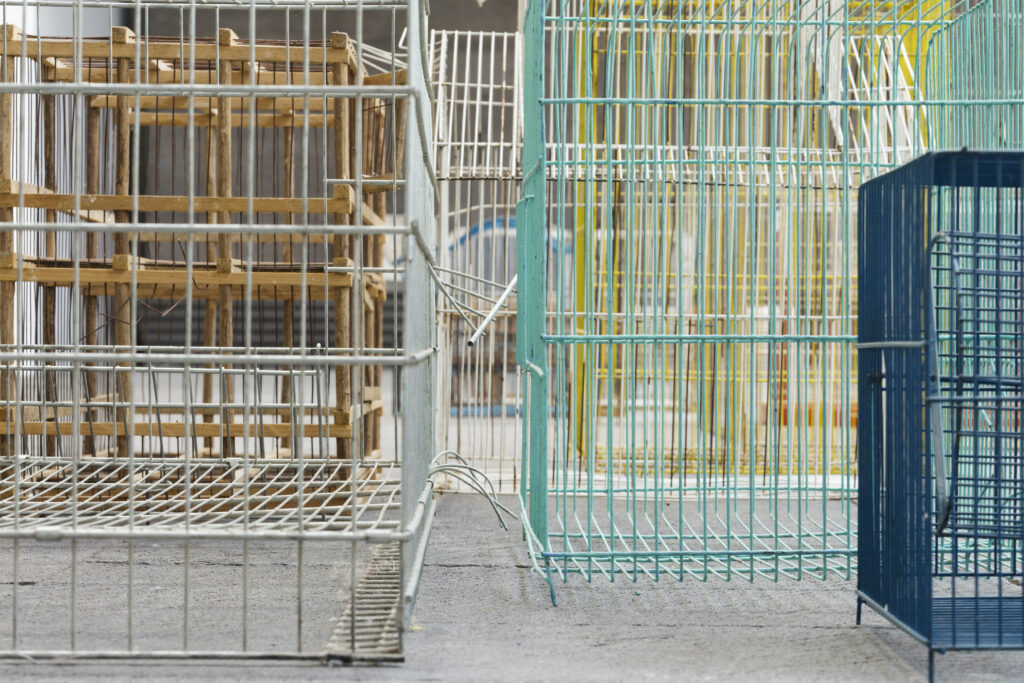
Past exhibition
Roman Ondak: Man Walking toward a Fata Morgana
About the Exhibition
To celebrate the centennial of Marcel Duchamp’s Fountain, The Arts Club of Chicago welcomes an exhibition by acclaimed Slovak artist Roman Ondak. Known for a conceptual oeuvre that draws on both participatory and object-based processes, Ondak interrogates the peculiarities of daily life in a post-Soviet and increasingly global context. For The Arts Club, Ondak gathers four sculptural installations that have never been shown in the United States along with an ongoing series of paintings begun in the 1990s, most of which were produced expressly for this exhibition. Taken as an ensemble, this work deploys found materials to reflect on aspects of memory and place–indicating Ondak’s rather ambivalent stance toward the legacy of the readymade.
The visual and conceptual centerpiece of the exhibition is Escape Circuit, 2014, an arrangement of 42 colorful, wooden and metal cages placed in a rough circle with interlocking passages. Ondak presents the cages as a hypothetical habitat, with the implication that an animal inhabitant could experience the illusion of freedom, but without ever leaving the loop determined by the architecture of his environment. Purchased in the markets of Mexico City where the work was first shown, these cages project cultural specificity with their weathered patina and potential for a not-so-subtle political metaphor. Ondak’s gestural intervention gives lie to the Duchampian assertion that found objects could be “indifferent” or somehow resist meaning.
Acknowledging the celebrity of The Arts Club’s staircase by Mies van der Rohe and further exploring the potential resonances of readymade materials, Ondak incorporates actual remnants of his childhood staircase into two works, each of which combines sardonic humor with an ability to articulate ideas through abbreviated form. In Leap, 2012, a section of staircase railing remains almost entirely intact except for 2 slats that are bent to commemorate the location from which the artist fell as a 2-year-old boy before his parents’ house was finished being built. Echoing the same event, Descending the Staircase, 2012, allows the emancipated slats to hang parabolically from a wire, the title an obvious nod to Duchamp’s ridiculed painting of a nude, completed a century earlier in 1912 and first seen in the United States at the controversial Armory Show of 1913. Outlined Stream, 2012, similarly employs materials from a hardware store to play on the tension between indifference and the inevitability of allusion. Again arranged in a circular pattern, the stiff metal shafts demarcate moments of interest that are strung together by a linking chain.
Finally, Ondak’s series Deserts, 1991-present, falls at the exact intersection of the possibility and impossibility of interpretation. Here, Ondak recuperates lost paintings, either from his own early years or from anonymous sources, and intervenes on their surface, obstructing the imagery with newly applied paint and then with a “cage” of interlaced copper wire. As the artist explains, he has adopted a technique formerly used to mend broken pottery and metal artifacts to encase the paintings. Once manipulated in this way, the “tinkered” paintings “map no man’s lands” and become “abstract deserts having no reference to our reality.” These paintings recall an early series by Ondak in which he covered found pages with black ink, as well as Robert Rauschenberg’s notorious erased de Kooning drawing. Rather than upset the authority of an original maker, as in the Rauschenberg example, Ondak’s move suggests a desire to release art from its representational and skillful obligations, even as he asserts the inescapable presence of association through the sculptural works on display.
About the Artist
Born in 1966 in Zilina, Slovak Republic, Roman Ondak lives and works in Bratislava. He trained at the Academy of Fine Arts, Bratislava, from 1988–94, and has exhibited internationally since the 1990s. Representative of the Slovak Republic in the 2009 Venice Biennale, Ondak has had solo exhibitions in the United States only twice before: in 2008 at San Francisco’s CCA Wattis Institute for Contemporary Art and as part of MoMA’s Performance series in 2009. He is the 2012 recipient of the Artist of the Year award from Deutsche Bank, Berlin. Other solo exhibitions have been held at Kunsten Museum of Modern Art, Aalborg (2017); South London Gallery, London (2016); Times Museum, Guangzhou (2015); Kaldor Art Projects, Sydney (2014); The Common Guild, Glasgow (2013); Museo Nacional de Arte Reina Sofia, Madrid (2013); the Musée d’art moderne de la Ville de Paris, Paris (2012); and Tate Modern, London (2006).
